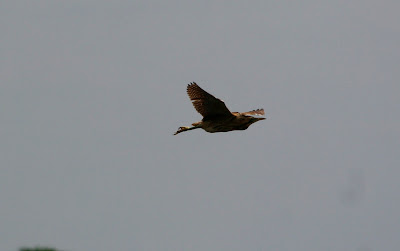
Max has just finished his A-levels, which is - I suppose - a perfectly valid reason for him not having done any bloggo stuff for yonks. However he has managed to sneak out a few times to sit in his car and listen to Tarkus with a peculiar look on his face, and occasionall to do a little bit of bird watching. He usually takes his camera with him, and over the last few months has built up a fantastic library of images of the wildlife of the Wells region of Somerset. Here are some of them...

 Bitterns are very strange birds. Being a heron they have the families typical features of a long bill, long legs and a fondness for fishing. My two local nature reserves, Shapwick Heath and Ham Wall, have been given large grants in order to attract bitterns. They need extensive reed beds, but with water levels such that they can build a nest which is at ground level, but not in danger of any flooding. The two nature reserves are at such an altitude that they are not in risk of flooding from global warming, even if the estimate of 17ft higher sea levels
Bitterns are very strange birds. Being a heron they have the families typical features of a long bill, long legs and a fondness for fishing. My two local nature reserves, Shapwick Heath and Ham Wall, have been given large grants in order to attract bitterns. They need extensive reed beds, but with water levels such that they can build a nest which is at ground level, but not in danger of any flooding. The two nature reserves are at such an altitude that they are not in risk of flooding from global warming, even if the estimate of 17ft higher sea levels  (the last interglacial period had sea levels 22ft higher than today, so this figure is not really, in a long term view, anything to worry about) is found to be too small, then the bitterns will be fine as they are well above sea level. This makes the colony sustainable in the long term.
(the last interglacial period had sea levels 22ft higher than today, so this figure is not really, in a long term view, anything to worry about) is found to be too small, then the bitterns will be fine as they are well above sea level. This makes the colony sustainable in the long term.Anyway, bitterns are now breeding at Ham Wall, which is great news. I went down there a few weeks ago to see what I could see, and I saw 7 episodes of flight from the bitterns, plus 3 lots of booming from the males. The
 photos from this trip are shown below. At Shapwick Heath I have seen 3 bittern flights, but they are not currently known to be breeding.
photos from this trip are shown below. At Shapwick Heath I have seen 3 bittern flights, but they are not currently known to be breeding.As an interesting postscript, there is a Little Bittern at Ham Wall at the moment. This is a rare bird indeed, not currently breeding in Britain. They are found all over Europe, apart from Britain. It would not surprise me if within 20 years they begin to breed in Britain. At the bottom of this page is some footage of it being bitterny.



Hi Max, Great photos! As yet, I haven't been lucky enough to observe a bittern in the wild, but, hopefully, I'll manage to do so one day. All the best, Karl
ReplyDelete